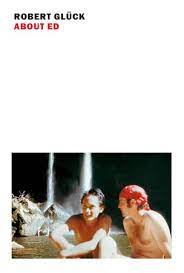 ABOUT ED
ABOUT ED
by Robert Glück
New York Review Books. 269 pages, $18.95
Robert Glück’s latest novel, About Ed, is a virtuosic amalgam of discursive ruminations—part AIDS memorial, part meditation. At its center, the author recounts his relationship with the visual artist Ed Aulerich-Sugai. They were lovers in the 1970s and remained close friends until his death from AIDS in 1994. Shifting perspectives and time frames interrupt the narrative, which includes reminisces about the dead lover, childhood memories, portraits of elderly neighbors, and travelogues. At first, this fragmented structure is confusing, but stick with it—About Ed delivers an immersive, emotionally rich experience.
Glück unabashedly celebrates sex, and lots of it. He also blurs various fictions and truths into a moving literary pastiche, incorporating text taken from taped recordings of his late friend as he slid into dementia and from the artist’s dream journals. Philosophical asides abound, as well as his confessions of petty, unforgiven slights. He calls this book both “a novel and my version of an AIDS memoir.” As with other “new narrative” queer writers, such as Dale Peck, Kevin Killian, Brad Gooch, and Kathy Acker, the storytelling approach is nonlinear, intentionally self-conscious, and profoundly personal. Two chapters under the heading “Notes for a Novel” provide a meta-view of the two decades of struggle it took for Glück to decide on the book’s final form.
Elegiac and introspective, the completed manuscript turns out to be less about portraying the deceased than about fending off intimations of mortality: “Do I write to remain in contact?—when I’m finished will he be truly buried?” The answer to these questions is that creating About Ed “turned into a ritual to prepare for death, and an obsession to put between death and myself.”
John R. Killacky
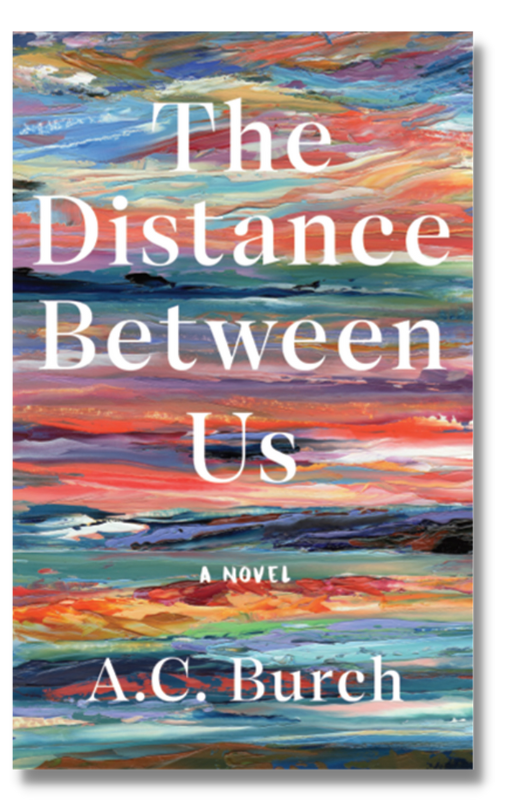 THE DISTANCE BETWEEN US: A Novel
THE DISTANCE BETWEEN US: A Novel
by A. C. Burch
HomePort Press. 370 pages, $17.99
Feisty, effervescent self-described “fulltime female impersonator” and part-time amateur sleuth Helena Handbasket returns in The Distance Between Us, a boisterous, rollicking follow-up to The Home Port Journals. Provincetown and nearby Cape Cod communities Wellfleet and Truro combine to make an atmospheric setting for this insular yarn featuring murder, mayhem, several bold art heists, and enough suspects and motives to sink the yachts in the historic harbor.
Burch hits the ground running with an electrifying opening. Wealthy, widowed aspiring socialite Bronx transplant C. J. Stronge, whose “idea of bliss was a night in bed with Edith Wharton,” has a fateful appointment with local legendary painter Mavis Chandry (her canvases sell in the millions), when a “deliberate electrocution” intervenes. Was Mavis the actual target? This is one of many questions Helena steps in to solve. As the inheritor and executive director of the Staunton sisters’ estate, Helena oversees the soon-to-be open Staunton Museum, with its outrageously valuable collection of forgotten Impressionists appraised at $400 million. Mavis has agreed to donate some of her work to enhance the museum’s gala opening. Before that happens, her paintings are vandalized with obscene graffiti. Was someone out to destroy Mavis’ collection and ruin the museum’s reputation?
The list of culprits is a lengthy one. Past personal secrets and present shady characters include an obsessive, homophobic acting chief of police, an inept architect, and a sketchy New Jersey physician and real estate developer. Tensions among townies, “washashores,” and “onion rings” (social climbers who don’t contribute) escalate along with thrilling boat races, chases, and getaways in nail-biting sequences. Helena’s colorful “chosen family” are secondary characters who support her investigative skills. All of this makes for an exuberant, entertaining read, with hopes for more perils of Provincetown to come.
Robert Allen Papinchak
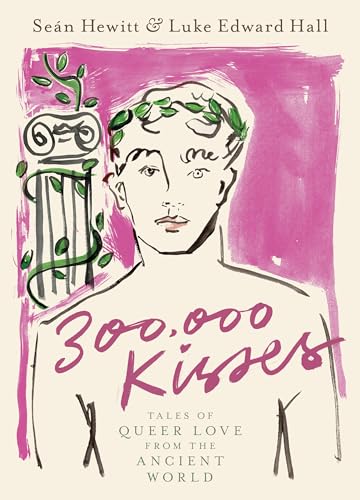 300,000 KISSES
300,000 KISSES
Tales of Queer Love from the Ancient World
by Sean Hewitt and Luke Edward Hall
Clarkson Potter. 207 pages, $22.
300,000 Kisses is a charming anthology of ancient literature showcasing queer desire in all its forms. Sean Hewitt presents new translations of excerpts from classical sources, along with brief introductions to each text, while Luke Edward Hall illustrates these excerpts to lovely effect.
Many works may be familiar to readers, such as Plato’s Symposium and Phaedrus, Sappho’s fragments, and Ovid’s Metamorphoses. The book’s title comes from a poem by Catullus, who remarked that “300,000 kisses/ is not close to enough.” Others are less well-known, such as graffiti from Pompeii in which a woman speaker laments her female lover, and a love spell from Egypt in which Sophia calls upon dark forces to make Gorgonia fall in love with her. In another, the early Christian Clement of Alexandria recounts a tale of the god Dionysus’ strange yet touching attempt to honor a deceased mortal who helped him.
Hewitt’s translations give a contemporary feel to these old works. For instance, one of Martial’s Epigrams celebrates the lesbian Philaenis as “most powerful of the pussy-lovers.” Xenophon’s Symposium has Socrates respond to a guest’s flirty interruptions with “put your claws away. … You only want me for my body, but I’m Socrates—I have a beautiful mind too!” Hewitt’s introductions to each work provide background information on the social context in which it was written, including the possibilities and limits on gender and sexual behavior. In Lucian’s Dialogue of the Courtesans, Leania shamefully describes her encounter with the masculine Megilla, who today might call herself trans. In Ovid, Iphis, a girl raised as a boy, laments her love for a girl named Ianthe. This collection reminds us that queer love has always existed.
Charles Green
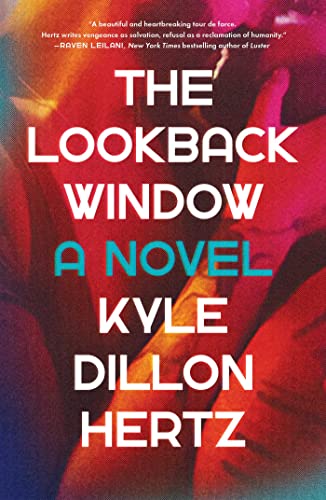 THE LOOKBACK WINDOW: A Novel
THE LOOKBACK WINDOW: A Novel
by Kyle Dillon Hertz
Simon & Schuster. 273 pages, $26.99
At fourteen, Dylan meets Vincent, age nineteen, online. Excited by his first sexual contacts, which are heightened by a variety of drugs, Dylan is hooked. Vincent grooms him with charm and praise through a series of sexual encounters, promising to marry Dylan when he turns eighteen. Dylan is then sex-trafficked for money, which Vincent says is useful experience for him. Often locked in a room, bruised and battered by such nights, Dylan remains Vincent’s weekend captive for three years, until he finally flees from upstate to New York City.
Moving through a variety of part-time jobs, some involving sex for pay, Dylan meets Moans, a kinder gay man who takes Dylan in. While more stable now, his life moves at a big-city pace—more drugs, more sex—with and without Moans, who cares for all of Dylan’s needs. After six years together, they decide to get married, inviting friends and family. For a time their marriage works, until it doesn’t.
A stipend from a graduate school writing program, along with a police report and referrals to lawyers and a counselor, all make Dylan more sure of his path to finding and punishing his pedophile perpetrators. What they took from him would rain down on them with a vengeance. A new law—the Child Victims Act, passed in 2019—opens the way ahead. A one-year lookback window will allow him time to pursue his abusers, time to reap justice. Now the burden will be placed squarely on them, freeing Dylan to become his authentic self at last.
Joe Ryan
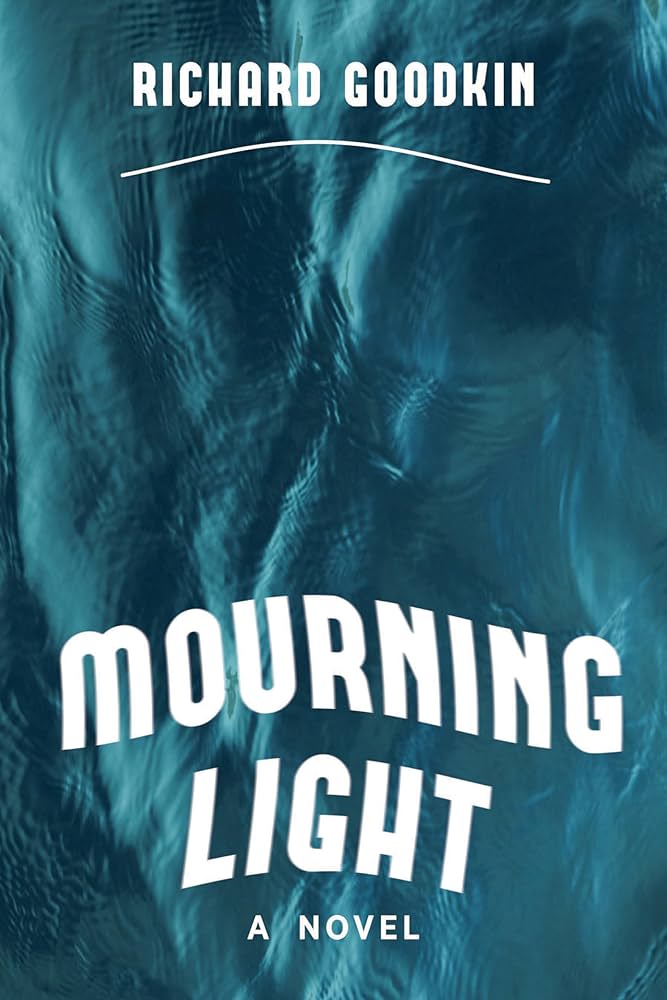 MOURNING LIGHT
MOURNING LIGHT
by Richard Goodkin
Univ. of Wisconsin Press. 192 pages, $17.95
For men of a certain age, HIV has colored every aspect of our lives such that there seems to be no reckoning without it. We learned to love in threesomes—us, our partners, and the wretched disease. In Mourning Light, Richard Goodkin offers an account of two relationships, separated by a decade and told through the gauzy, guilty horror of the AIDS crisis.
While a novel about AIDS could easily become maudlin and dreary, Goodkin charms us with unique and vivid characters. The story unfurls mainly on two university campuses, bouncing between the rarefied atmosphere of Yale, where the narrator is a first-year literature professor, and the slightly less rarefied setting of the University of Wisconsin. In the latter, Madison and nearby Lake Monona are lovingly painted as a backdrop for both grief and renewal. The story moves crisply and keeps us involved. There is a twist at the end, which is signaled but not overly foreshadowed. The mystery of it keeps us guessing.
Written in the first person, Mourning Light offers an intimate narrative that connects the reader with a credible and delicately flawed protagonist. You root for him to succeed, to survive, and to untangle the strange set of coincidences that have befallen him. If, by the end of the book, he can unlock the puzzle of the two lovers who come into his life (Eric and Anthony) and the gifts that each has brought to him, then perhaps he can find some greater purpose in the decades of dying that were such a part of his life.
Cary Alan Johnson
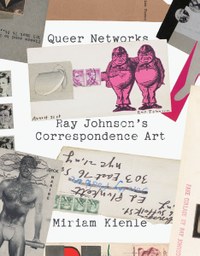 QUEER NETWORKS
QUEER NETWORKS
Ray Johnson’s Correspondence Art
by Miriam Kienle
Univ. of Minnesota Press. 279 pages, $34.95
Ray Johnson was an enigmatic and reclusive artist who emerged as part of the New York art scene in the early 1960s. His work encompassed collage, mail art, performance, photography, and repurposed found objects. But Johnson is best known for his role in instigating the mail art movement. He meticulously (and obsessively) collaged together newspaper clippings and photos from gay physique magazines, pictures of dead celebrities, advertisements, and personal letters to create what he called “moticos.” He mailed them to friends, art world colleagues, and sometimes strangers. He encouraged “on-sending” by asking recipients to forward the card to someone else.
Miriam Kienle’s Queer Networks analyzes this body of work through an academic lens. She argues that the artist’s mail art used camp and homoerotic imagery, along with insertions of innuendo, to create coded queer assemblages that were radical statements—and they were being distributed by the postal service in pre-Stonewall times. While Kienle’s thesis is astute, she focuses on only one component of this artist’s œuvre, namely Johnson’s collages—which are extraordinary, but his performative acts, which the artist called “nothings,” were just as important. Johnson left behind a vast archive: some of the 3,000+ photographs found in this cache were shown in the 2022 Morgan Library & Museum exhibition Please Send to Real Life: Ray Johnson Photographs. Kienle’s perceptive centering of queerness in Johnson’s artmaking would illuminate all this work as well.
John R. Killacky






